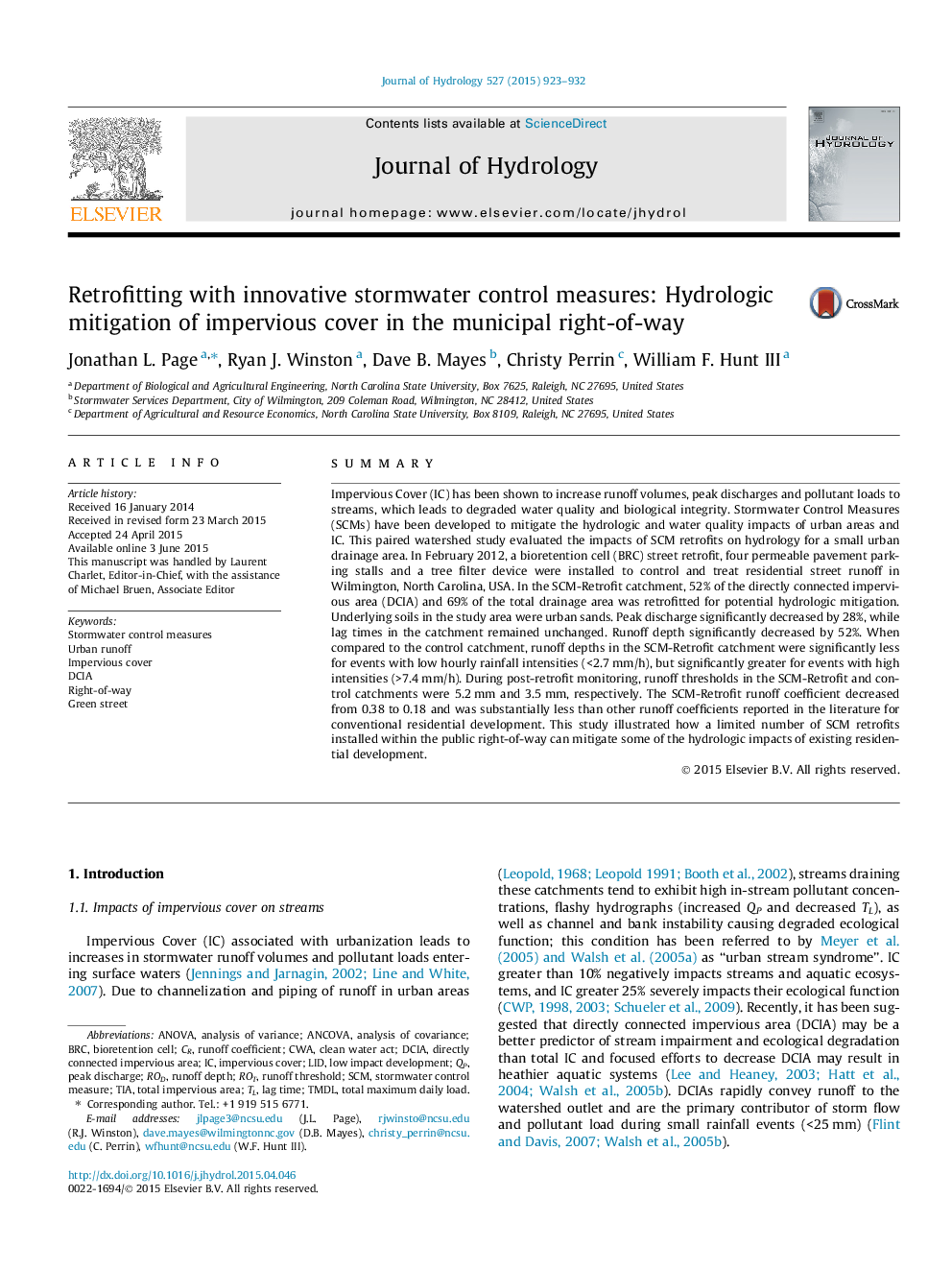| Article ID | Journal | Published Year | Pages | File Type |
|---|---|---|---|---|
| 6411210 | Journal of Hydrology | 2015 | 10 Pages |
â¢There is usable space within the municipal right-of-way to construct stormwater control measures as retrofits.â¢SCM retrofits cannot always be designed or located ideally.â¢Hydrologic mitigation of impervious cover is appreciable and significant when just half the catchment was treated.
SummaryImpervious Cover (IC) has been shown to increase runoff volumes, peak discharges and pollutant loads to streams, which leads to degraded water quality and biological integrity. Stormwater Control Measures (SCMs) have been developed to mitigate the hydrologic and water quality impacts of urban areas and IC. This paired watershed study evaluated the impacts of SCM retrofits on hydrology for a small urban drainage area. In February 2012, a bioretention cell (BRC) street retrofit, four permeable pavement parking stalls and a tree filter device were installed to control and treat residential street runoff in Wilmington, North Carolina, USA. In the SCM-Retrofit catchment, 52% of the directly connected impervious area (DCIA) and 69% of the total drainage area was retrofitted for potential hydrologic mitigation. Underlying soils in the study area were urban sands. Peak discharge significantly decreased by 28%, while lag times in the catchment remained unchanged. Runoff depth significantly decreased by 52%. When compared to the control catchment, runoff depths in the SCM-Retrofit catchment were significantly less for events with low hourly rainfall intensities (<2.7Â mm/h), but significantly greater for events with high intensities (>7.4Â mm/h). During post-retrofit monitoring, runoff thresholds in the SCM-Retrofit and control catchments were 5.2Â mm and 3.5Â mm, respectively. The SCM-Retrofit runoff coefficient decreased from 0.38 to 0.18 and was substantially less than other runoff coefficients reported in the literature for conventional residential development. This study illustrated how a limited number of SCM retrofits installed within the public right-of-way can mitigate some of the hydrologic impacts of existing residential development.
